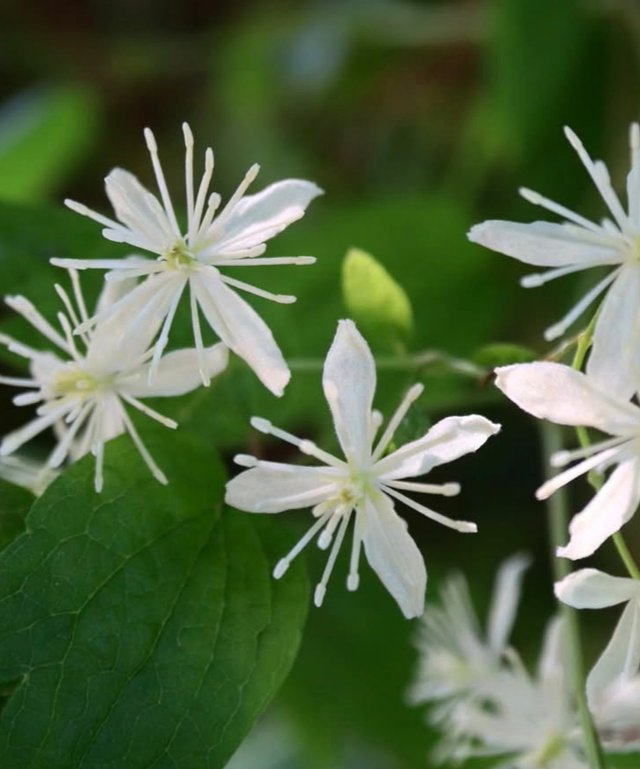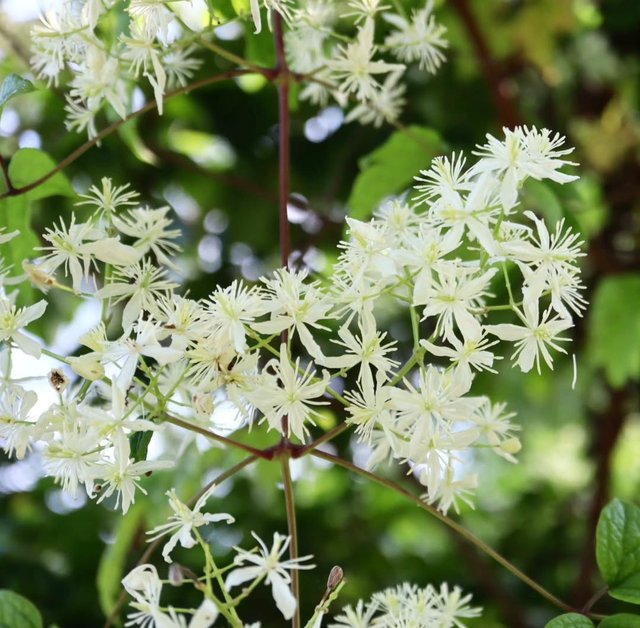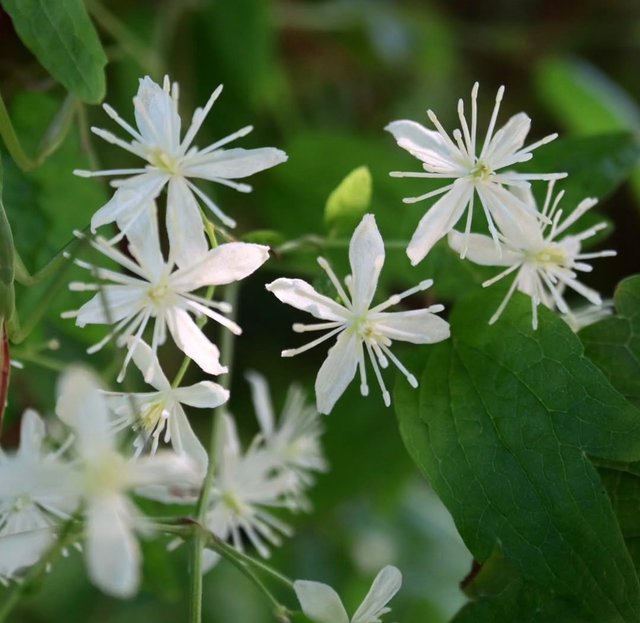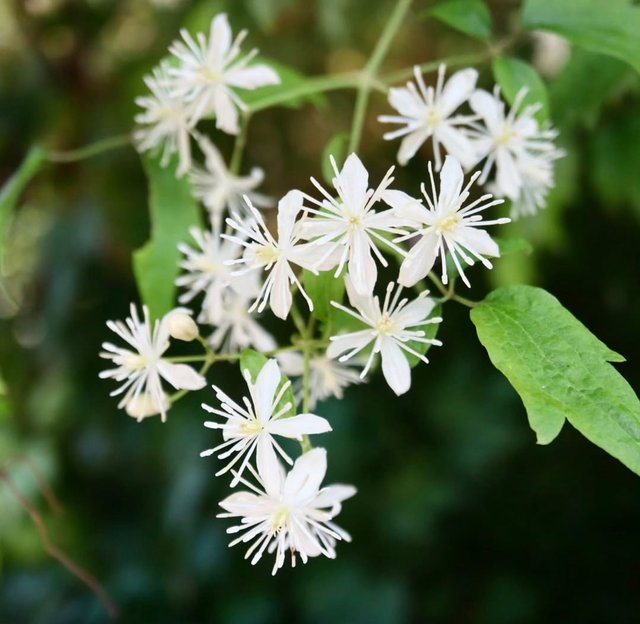Sweet autumn clematis
Sweet autumn clematis,is a vigorous, fast-growing perennial vine belonging to the Ranunculaceae family and is highly valued for its profuse and fragrant late-summer to autumn blooms. Native to Japan and parts of Asia, this plant has been widely cultivated and naturalized in many regions due to its adaptability and ornamental charm. It can grow rapidly, often reaching heights of 20 to 30 feet when supported, climbing by means of its twining leaf petioles that cling to trellises, fences, or other plants. The leaves are compound, usually with three to seven leaflets, dark green in color, providing a lush backdrop for the masses of flowers.
The blossoms are small, star-shaped, typically creamy white, and they appear in dense clusters that can cover the plant in a cloud-like display, filling the air with a sweet, honey-like fragrance that attracts bees, butterflies, and other pollinators. Blooming occurs from late August into September or October, depending on the climate, providing much-needed beauty and nectar when many other flowers are fading. Following the flowers, attractive silvery seed heads develop, which add ornamental interest into winter. Sweet autumn clematis thrives in full sun to partial shade, with well-drained, fertile soil that retains some moisture, though it is tolerant of a variety of soil types once established.
It is considered hardy in USDA zones 5 through 9 and benefits from annual pruning in late winter or early spring to control its vigorous growth and encourage abundant flowering. While admired for its ornamental qualities, it can be invasive in some regions, particularly in parts of the United States, where it can outcompete native vegetation, so cultivation should be managed responsibly. Gardeners often grow it on arbors, pergolas, and fences, or allow it to cascade over walls, where its cascading mass of white flowers creates a striking visual effect. Symbolically, clematis flowers are associated with creativity, ingenuity, and spiritual beauty, and sweet autumn clematis, with its late-season bloom, also represents endurance and the quiet strength of nature.



